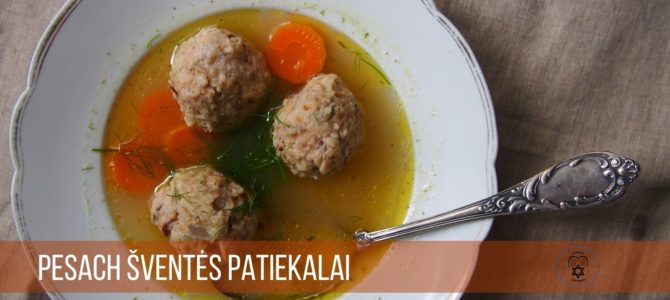Passover, the most important Jewish holiday which lasts for eight days, begins on March 27 this year. The date for celebrating Passover is set by the lunar calendar: the first full moon after the vernal equinox. The name of the holy day comes from “pesakh,” meaning passed over, recalling the story of the Angel of Death which passed over the Israelites before Moses led the slaves out of Egypt.
“The symbolic meaning of this holiday is that it wasn’t separate Jewish families which came out of Egypt, but a single, united Jewish people. The Jewish people throw off the yoke of slavery and leave in order to reach the Promised Land, and there create their nation,” Lithuanian Jewish Community chairwoman Faina Kukliansky explained.
Passover Traditions over the Millennia
Keeper of Jewish cultural and religious traditions Natalija Cheifec said although the exodus from Egypt occurred more than 3,300 years ago, Passover traditions have remained almost unchanged over the many centuries. The main feature of the eight-day holiday is the seder dinner when the Hagada is read out, prayers are made and people sit at the seder table and eat from the seder plate, or ke’are.
There are also six foods on the ke’are, including the bone, symbolizing the sacrificial lamb; bitter herbs, onions and horseradish, recalling the bitter and difficult life of the Jewish people in slavery in Egypt; a vegetable which is not bitter (often a potato here), symbol G_d knew beforehand of the thousands of trials He would send to the Israelites; a dark sweet mass made from apples, pears and dates, symbolizing passing from bitterness to sweetness, from tragedy to happiness; and the egg which is dipped in salt water. Natalija Cheifec says the salt water represents the tears shed in slavery and the briney waters of the Red Sea which Moses parted so that the Israelites were able to cross without wetting their feet.
Traditionally four cups of wine or grape juice are drunk at the Passover holiday table and the children pose four questions to the adults, such as, why is this night like no other? The answers involve long explanations of the signs G_d gave and the miraculous escape from Egypt.
Secrets of Matzo-Making
Matzo is another traditional Passover food. It’s a simple, unleavened flour wafer which is eaten during Passover. Natalija Cheifec says the recipe for making this food arose accidentally: “The Jewish people had to flee Egypt quickly and there was no time to prepare. So the dough which the women had made in the evening hadn’t risen yet. It had to be cooked earlier than usual, and that’s how matzo came about. An interesting fact: during Passover it is forbidden to eat any yeast food products or even to have any at home, so there is a careful cleaning in preparation for Passover so that not even a crumb of raised bread might remain in the home.”
Natalija recalls the large Jewish community living in Lithuania before the war used to make and eat a large amount of matzo, but after the Holocaust the only place which made matzo was the Choral Synagogue in Vilnius, which had and has a matzo-making machine. Nowadays matzo is made abroad and imported, she said.
There are other dishes which are made with matzo and which appear on the seder table, including kneydlakh balls. These are said to be especially delicious served in chicken broth. “We say good chicken soup is medicine. Of course right now we need to be very careful of our health, but a strong and filling broth won’t hurt if you do fall ill,” Faina Kukliansky said.
How to make Jewish recipes using matzo:
Ingredients needed for:
Kneydlakh, or matzo balls:
500 g. matzo flour (or crushed matzo)
3 eggs
salt
20 ml oil
Jewish chicken soup:
Jewish chicken broth
kosher chicken
1 carrot
1 onion
1 chunk of pumpkin
1 leek
1 zucchini
1 celery stalk
spices: dill, salt, pepper, laurel leaves


